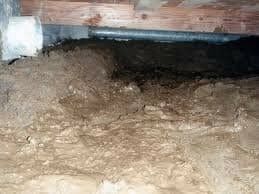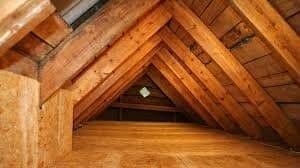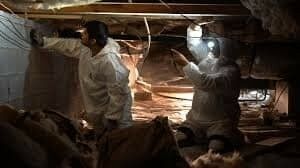
Introduction
Water damage can wreak havoc on your property, causing significant destruction and financial loss. When it comes to property damage, water damage ranks high on the list. It can result from various incidents, such as floods, burst pipes, leaks, and storms. Restoring a property after water damage is crucial to prevent further deterioration and ensure a safe living environment.
The Different Types of Property Damage

1.
Structural Damage
Water has the potential to weaken the structural integrity of a building. It can compromise the stability of walls, floors, and ceilings, leading to sagging, cracks, and even collapse in severe cases. Structural damage requires immediate attention to prevent further deterioration and ensure the safety of occupants.
2.
Mold Damage
Excessive moisture from water damage creates an ideal environment for mold growth. Mold not only damages materials such as wood and drywall but also poses health risks to occupants. Mold removal and remediation are crucial in preventing the spread of mold spores and the associated health hazards.
3.
Electrical Damage

Water and electricity do not mix well. When water infiltrates electrical systems, it can pose a severe risk of electrical shock and fire. Electrical damage requires immediate attention from professionals to ensure the safety of occupants and prevent further electrical hazards.
4.
Content Damage
Water damage can also affect personal belongings, furniture, electronics, and other valuable items within a property. Depending on the extent of the damage, some items may be salvageable through professional restoration techniques, while others may need to be replaced.
The Water Damage Restoration Process
Water damage restoration is a multi-step process that involves assessing the damage, mitigating further damage, extracting water, drying and dehumidifying the affected areas, cleaning and sanitizing, and restoring the property to its pre-damage condition. Here are the key steps involved in the restoration process:
1.
Assessment
A professional restoration team will assess the extent of the water damage, including the affected areas and the severity of the damage. This assessment helps them develop a customized restoration plan.
2.
Damage Mitigation
Immediate action is taken to prevent further damage. This may involve shutting off the water source, tarping or boarding up damaged areas, and taking steps to minimize potential hazards.
3.
Water Extraction
Using specialized equipment, water is extracted from the property. This includes removing visible standing water as well as moisture trapped within walls, floors, and other materials.
4.
Drying and Dehumidification
The affected areas are thoroughly dried using industrial-grade drying equipment and dehumidifiers. This step is crucial in preventing mold growth and ensuring a complete restoration.
5.
Cleaning and Sanitizing
After the drying process, the property is cleaned and sanitized to remove any contaminants and minimize the risk of mold and bacterial growth. This includes disinfecting surfaces, cleaning upholstery, and deodorizing the affected areas.
6.
Restoration
The final step involves restoring the property to its pre-damage condition. This may include repairing structural damage, replacing damaged materials, and restoring personal belongings.
The Importance of Professional Water Damage Restoration Services
While it may be tempting to handle water damage restoration on your own, hiring professional restoration services is highly recommended. Here’s why:
1.
Expertise and Experience
Professional restoration teams have the knowledge, skills, and experience to assess and address water damage effectively. They understand the complexities involved in the restoration process and can provide comprehensive solutions.
2.
Safety and Risk Mitigation
Water damage restoration can pose various safety risks, including electrical hazards, mold exposure, and structural instability. Professionals are equipped with the necessary safety equipment and protocols to minimize these risks and ensure the safety of occupants and workers.
3.
Efficiency and Time-Saving
Professional restoration services work efficiently to mitigate further damage and restore your property as quickly as possible. Their expertise and specialized equipment enable them to expedite the restoration process, minimizing downtime and reducing the overall costs associated with water damage.
4.
Insurance Claim Assistance
Professional restoration companies often have experience working with insurance providers and can assist you in navigating the claims process. They can document the damage, provide accurate estimates, and communicate directly with your insurance company on your behalf.
Conclusion
Water damage restoration is a vital process in restoring properties affected by water-related incidents. Understanding the different types of property damage, the restoration process, and the benefits of hiring professional restoration services can help you make informed decisions and effectively restore your property after water damage. Don’t hesitate to reach out to reputable restoration companies like JGW Group Water Damage Restoration to ensure a thorough and efficient restoration process.



